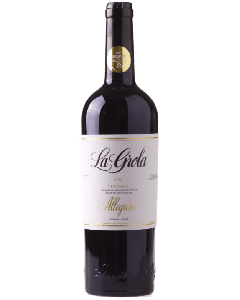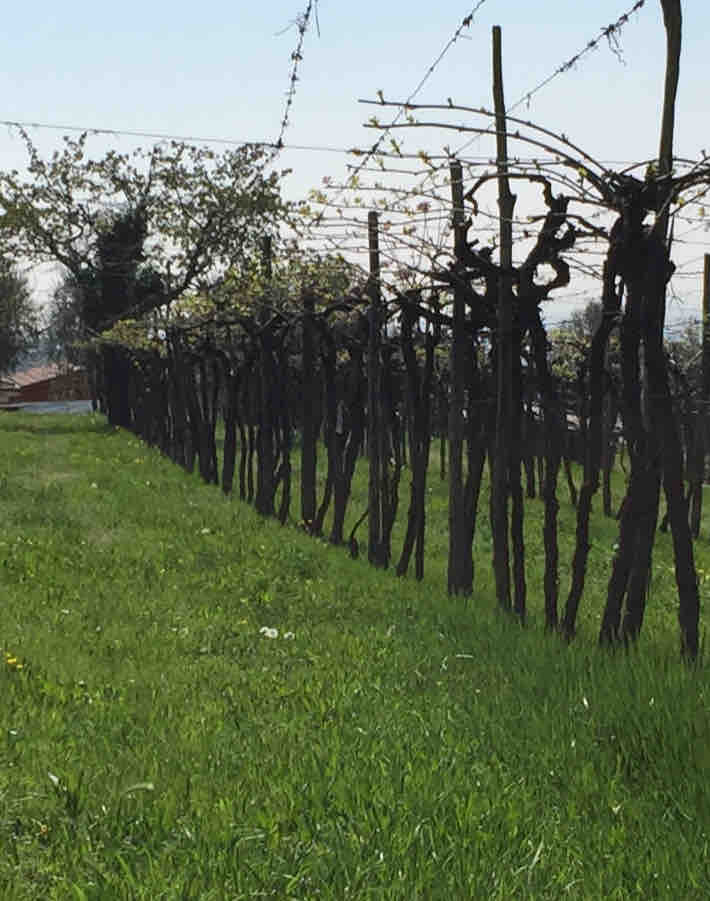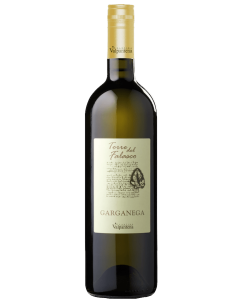We use cookies to make your experience better. To comply with the new e-Privacy directive, we need to ask for your consent to set the cookies. Learn more.
Giuseppe Quintarelli 2007 Recioto della Valpolicella Classico 'A Roberto' Half Bottles
On rare occasions Quintarelli makes a Recioto della Valpolicella. This a sweet red wine made exactly the same way as Amarone, in that the grapes are dried after harvest in the winery until January when they are pressed, followed by a long maceration, and a slow fermentation of 45 days. The difference being Recioto is a sweet wine, so not fermented right out like Amarone. During fermentation, if the yeasts win, the wine become Amarone, if the sugars win, the wine becomes Recioto.
Like all Quintarelli's wines, this is pure hedonism with its richness and concentration, but never heavy, nor in any way jammy. It is still remarkably fresh and lively with fruit to the fore, but with high notes of tobacco, forest floor, camphor, red flowers and hedgerows. Do not think of this as a dessert wine - it is much more than that. Gastronimically it is perfect with venison or game, particularly with rich sauces. But perhaps the best way of all to drink it is just on its own. What the Italians call a vino meditazione - meditation wine.
This is a truly profound wine, and is perhaps one of the longest lived of all Quintarelli's wines. 2 or 3 decades in the cellar would hardly test this wine at all.
One of the rarest and most extraordinary wines produced in Italy
This Month's Mixed Cases










The Wine Region

Veneto
Veneto is the largest of Italy's vineyards covering a large part of NE Italy from the Alps to the north to the fertile plains of the Po River basin in the south. It is no surprise the the best vineyards are on the slopes with the industrial wine coming from the flats. This region is the home of some of the country's most famous DOCs Soave, Valpolicella and Prosecco to name a few. Soave and Valpolicella are next door neighbours and are both composed of limestone and basaltic formations. Soave is potentially one of Italy's great white wines: a regions that is exploring its zones in developing a cru system. Valpolicella is already established as one of the great sources of red wines in the north of Italy reaching its peak with the very best producers of Amarone.
Prosecco has undergone one of the biggest booms to occur anywhere in the world of wine. From humble beginnings which was essentially just two communes, Valdobbiadene and Conegliano, Prosecco has spread like wildfire across the plains and hills of NE Italy.


The Sub-Region

Valpolicella
Valpolicella is a series of valleys in Italy’s pre-Alps in the region of Veneto, bordering the DOC of Soave, but here it is only red wines that are produced. The varieties used are a combination of Corvina, Corvinone, Rondinella and Molinara, but others are permitted. As in neighbouring Soave, the best vineyard sites are on the hillsides, away from the quantity led, fertile soils of the lower plains.
There are a number of styles of wine produced here: Valpolicella and Valpolicella Classico are the styles simply made from freshly harvested grapes. Amarone della Valpolicella is made from grapes which have been dried in the winery until they reach a point of desiccation, followed by pressing and fermentation in the normal way. Due to a higher concentration of sugars from the drying, Amarone is a much more profound wine. Valpolicella Superiore is not strictly regulated as to be precise in its vinification methods, but is normally a blend of dried and fresh grapes. There is another style which is gaining momentum and that is Valpolicella Ripasso. This is an almost unique style of wine to this region where the fresh Valpolicella is refermented with the gross lees (the residual solids from the fermentation) from the same year’s Amarone.
The Producer

Giuseppe Quintarelli
This producer is one of the three of the, what I call, Holy Trinity of Italy: Biondi-Santi in Montalcino, Conterno in Barolo and Quintarelli in Valpolicella. These are the three estates upon which Italy built its reputation in the world. Forget about all the Super Tuscans, that win all the big reviews, these are the quintessence of Italy - never wavering from their traditions and making wines the likes of which can't be found anywhere else in the world. There are other great producers in Valpolicella, but there is only one Quintarelli.
The estate was founded at the turn of the 20th century by Silvio Quintarelli, a grape grower utilising the mezzadria system (sharecropping). The family finally bought the land and passed to Sylvio's son Giuseppe in the 1950s who maintained the traditions of winemaking but modernised to a certain extent.
Tasting and visiting there is an experience to say the least. You enter the winery brimming with anticipation and excitement knowing that this is where some of the greatest wine 'magic' of turning grapes into nectar occurs. I visited in April 2017, guided by Giuseppe Quintarelli's grandson, Francesco. The winery is surprisingly modest, there are only 11 hectares of vineyards, but there are many, many vintages of the wines in the barrels. The tasting is hushed and low-key in a dimly lit room and always from pre-opened bottles. It almost has the atmosphere of an old library or a Dickensian office - a real throwback, but this is how they like it. As if the laws that Giuseppe set down two generations ago are still revered.
You may be forgiven for being confused by their range of wines as the nomenclature and hierarchy is complicated. So, a little explanation of the wines is required. To start, there is a dry white called Bianco Secco. A mixture of local varieties such as Trebbiano Toscano, Garganega, Saorin and a little of international varieties of Chardonnay and Sauvignon Blanc. Next up is their red, Primofiore. This is an IGT which is again is a mix of local and international varieties, Corvina, Corvinone, Cabernet Sauvignon and Cabernet Franc. This is the only red that they make that doesn't go through some form of appassimento (the grape drying process), but saying that the Cabernets have a short period of drying.
Next in the range are the Valpolicella Classico Superiore and Rosso Ca del Merlo. These two are brothers, as they are made pretty much the same way. Both are 50/50 fresh grapes and dried grapes, then go through the Ripasso process (a refermentation on the gross lees of the Amarone). The difference between the two being Valpolicella is traditional grape varieties with Rosso Ca del Merlo a blend of traditional varieties peppered with Cabernet Sauvignon, Cabernet Franc, Nebbiolo (yes, you read that right), Sangiovese and Croatina.
After these, are the pure appassimento wines. Amarone, of course, Amarone Riserva and Rosso del Bepi. These are in essence all made the same way. The wine is only called 'Amarone' when it is from a great vintage. In, let's say, 'normal' years it's called Rosso del Bepi and bumped down to IGT, but is in essence still an Amarone. In exceptional years, and only when it has been aged for at least a decade the wine becomes Amarone Riserva. When the wine is from a vintage that is not up to their exacting standards, none of these will be made. There is also Alzero, essentially an Amarone, but made with the two Cabernets and Merlot. Finally, there is Recioto. When the yeasts win, the wine becomes dry and Amarone: when the sugars win, it becomes sweet and Recioto.
Quintarelli is not for everyone. Yes, they are high priced, but not just that: these are the essence of artisanal winemaking and have tremendous personality. They have admirers all over the world with the name being uttered with reverence and respect.
Collections

Appassimento Wines
Appassimento is a process of making wines, the most famous result of these is Amarone della Valpolicella originating in the hills of Verona in Italy's region of Veneto. The word comes from the Italian verb 'appassire' - to wither.
During this process the grapes are dried after harvest in the winery until they reach a point of desired concentration. The grapes can lose around 30% of their original weight, concentrating the sugars, flavour compounds, and acidity. Wines made by this process have augmented alcohol and/or sweetness due to the loss of water.
For Amarone and its sweet counterpart Recioto, the time of pressing of the grapes is dictated by the Valpolicella consortium so that a minimum desired level of concentration is achieved. The process sometimes attracts the benevolent fungus noble rot (botrytis cinerea), which adds an extra dimension to the aromatics and further concentrates the grapes. In other parts of Italy, and elsewhere in the world, the regulations are not so rigid.
The process is often confused with Ripasso, which although is another winemaking method, it is dependent on having dried grapes for the refermentation to occur. However, certain wines can be made by both processes as the Valpolicella Classico Superiore and Giuseppe Quintarelli from Giuseppe Quintarelli











